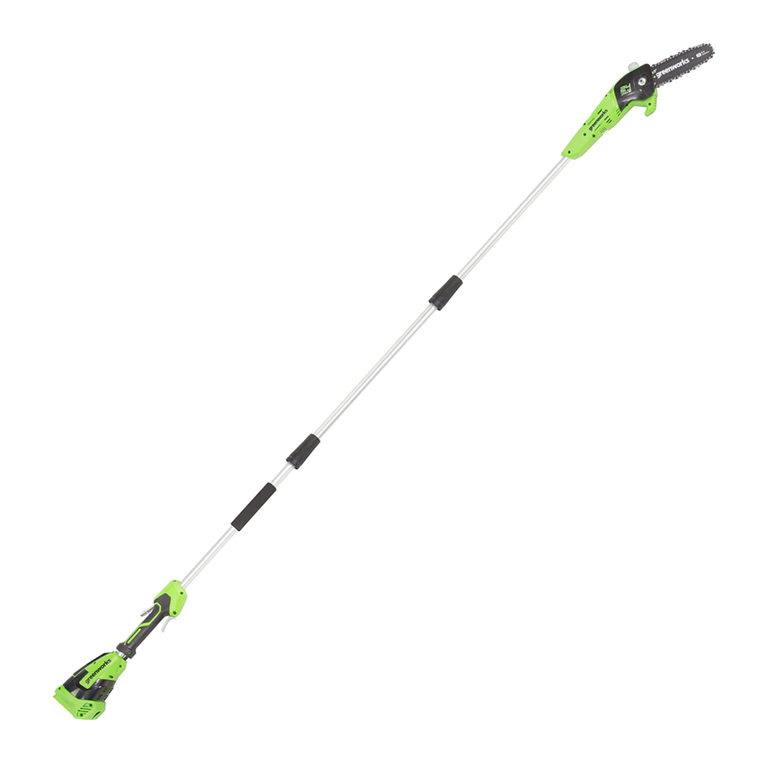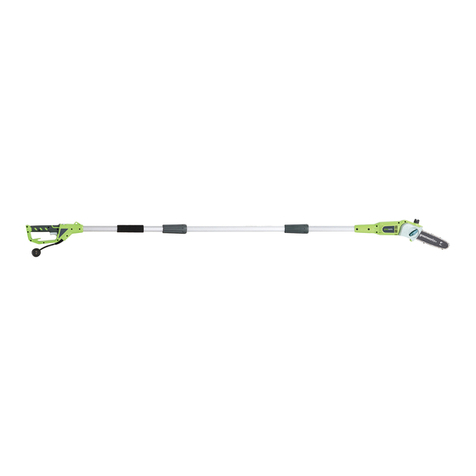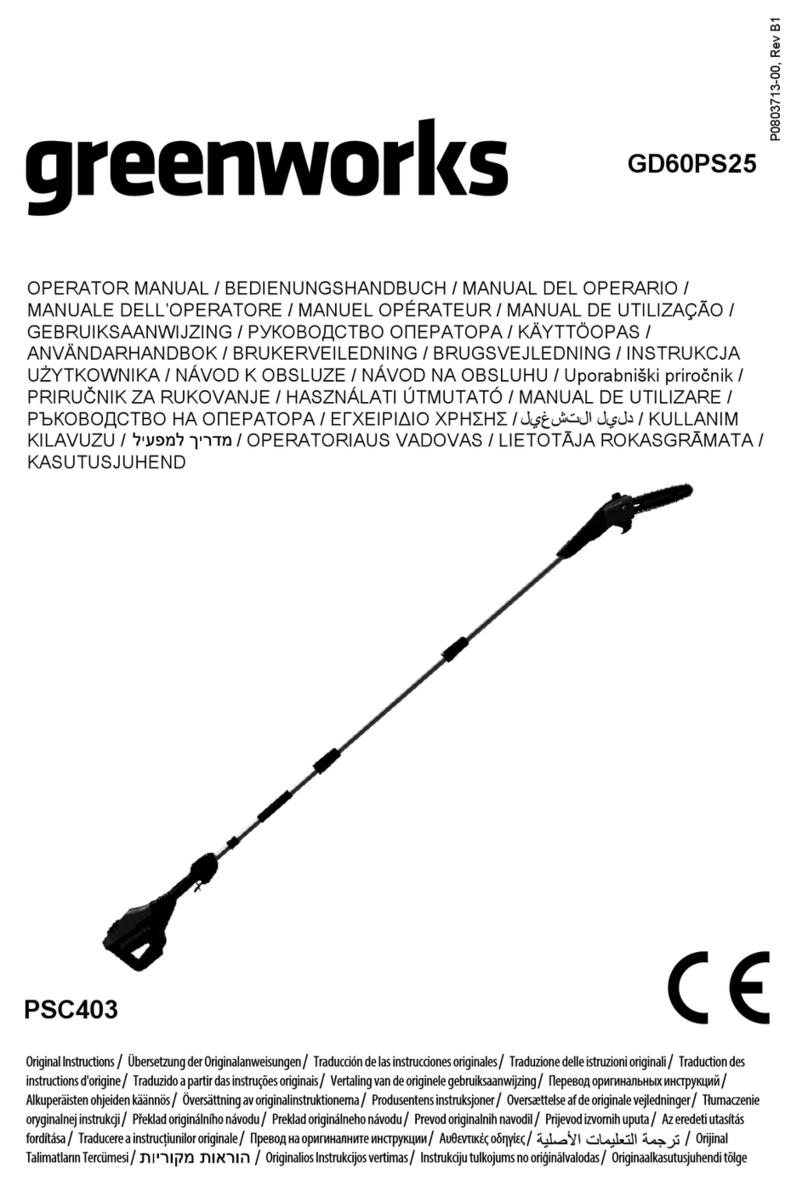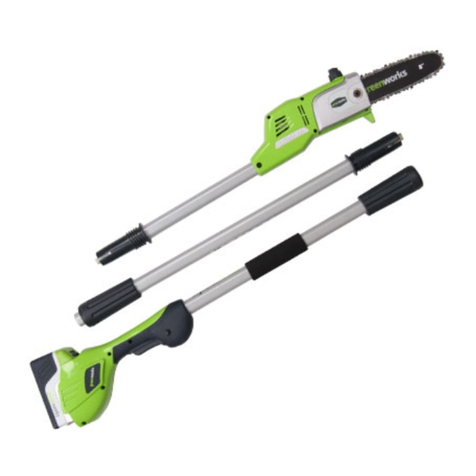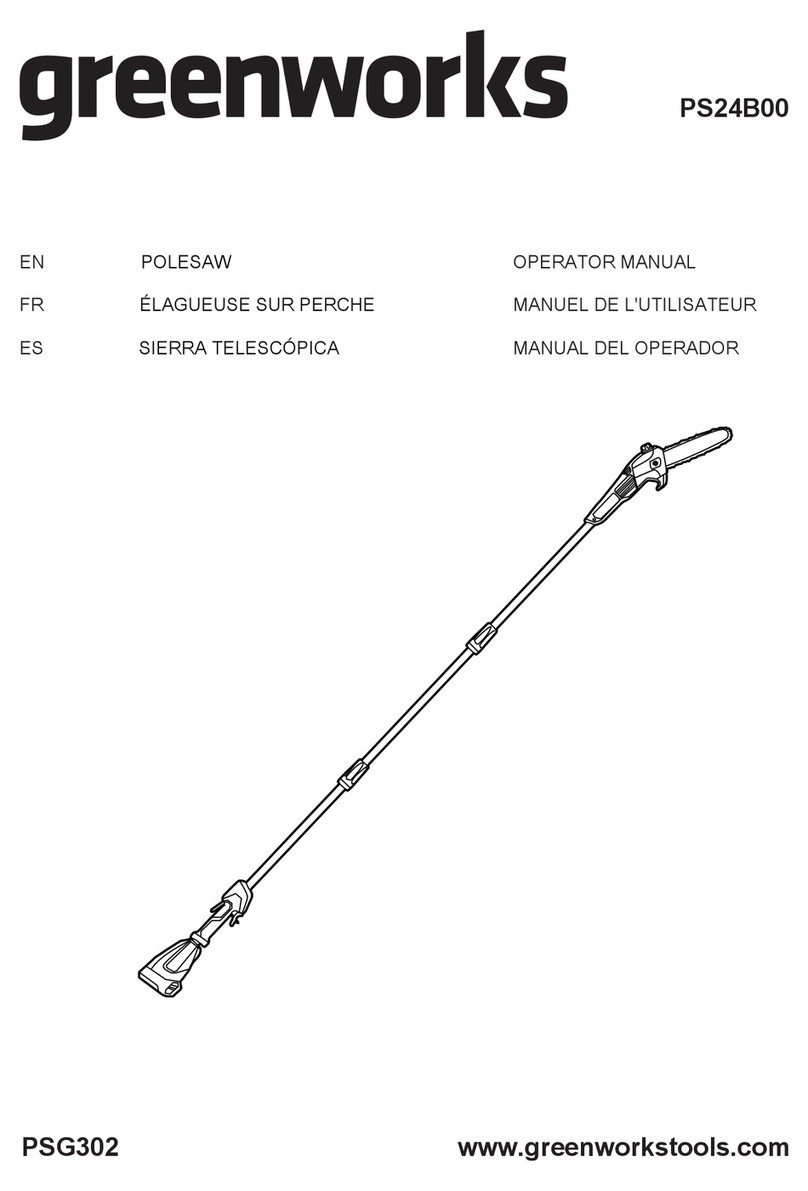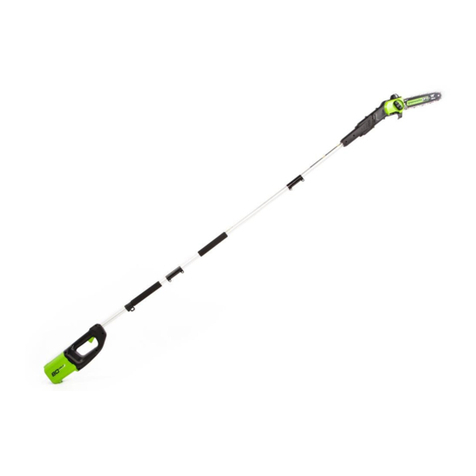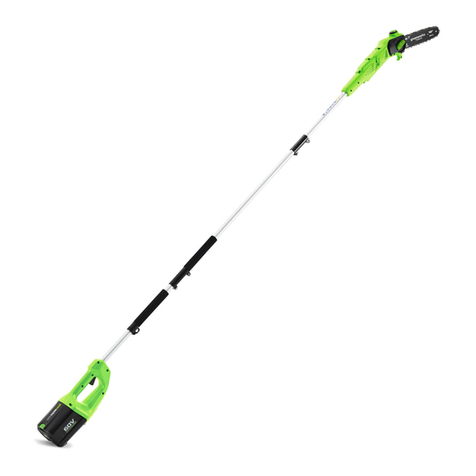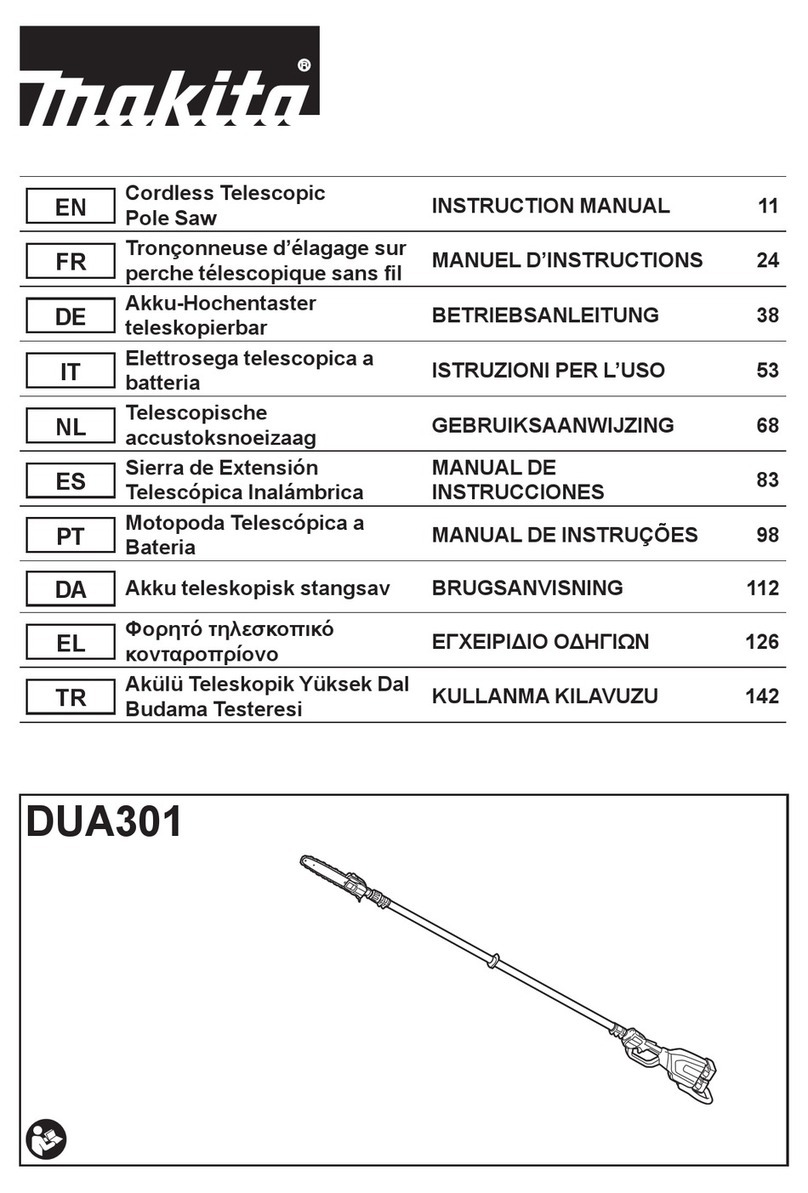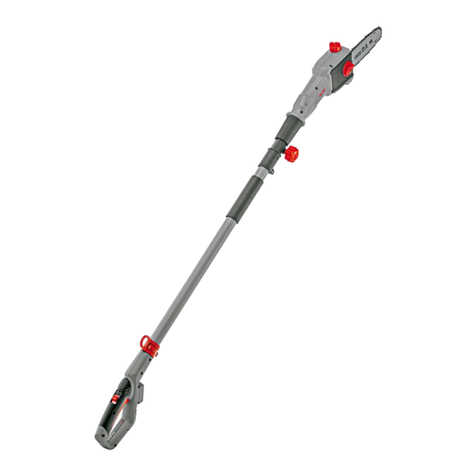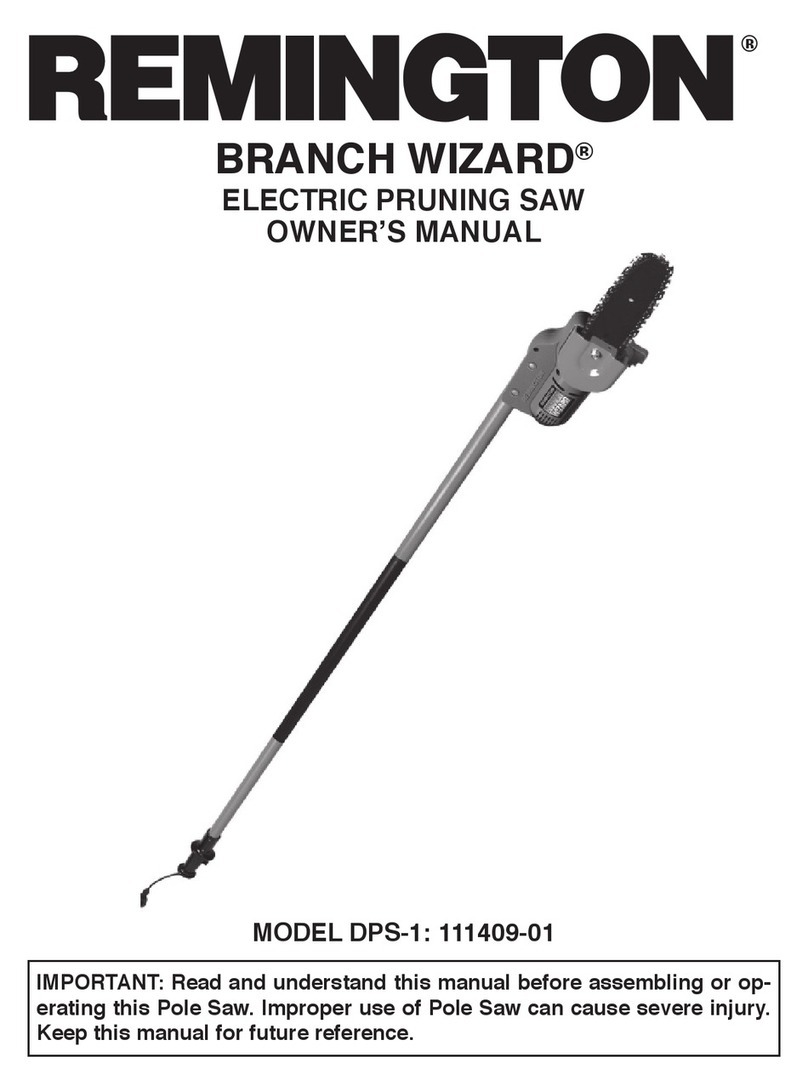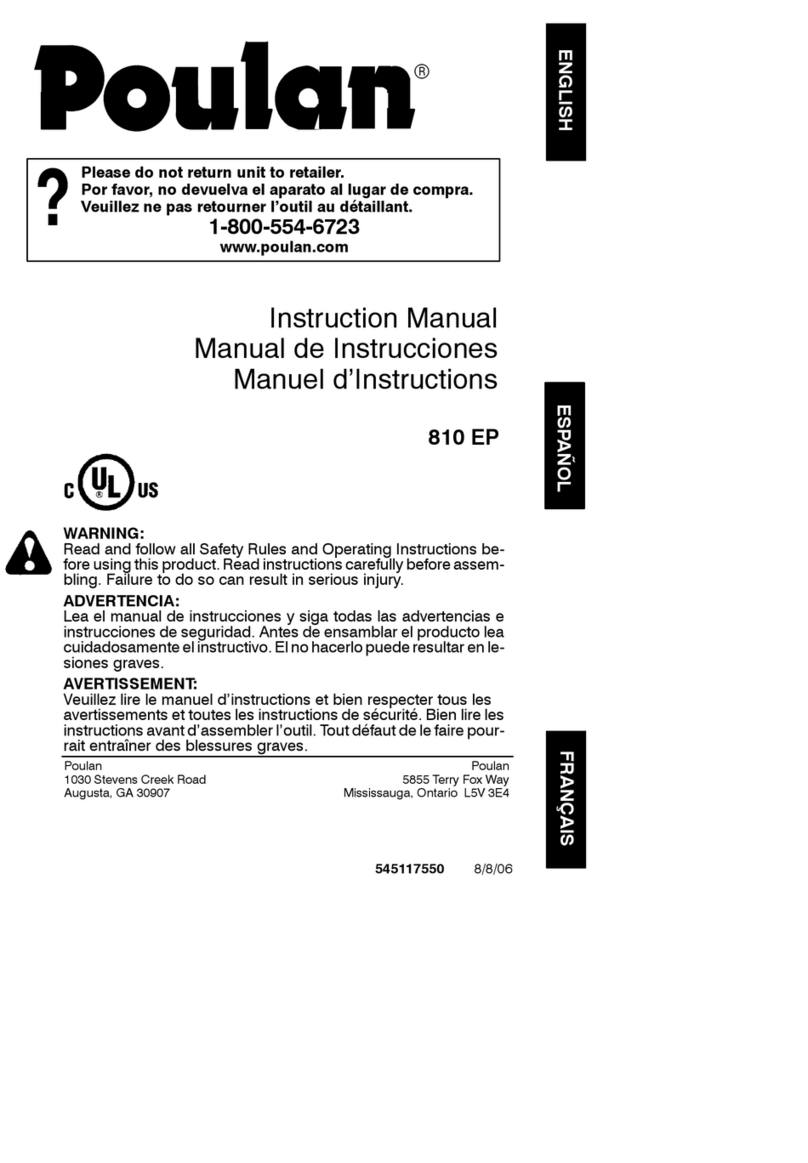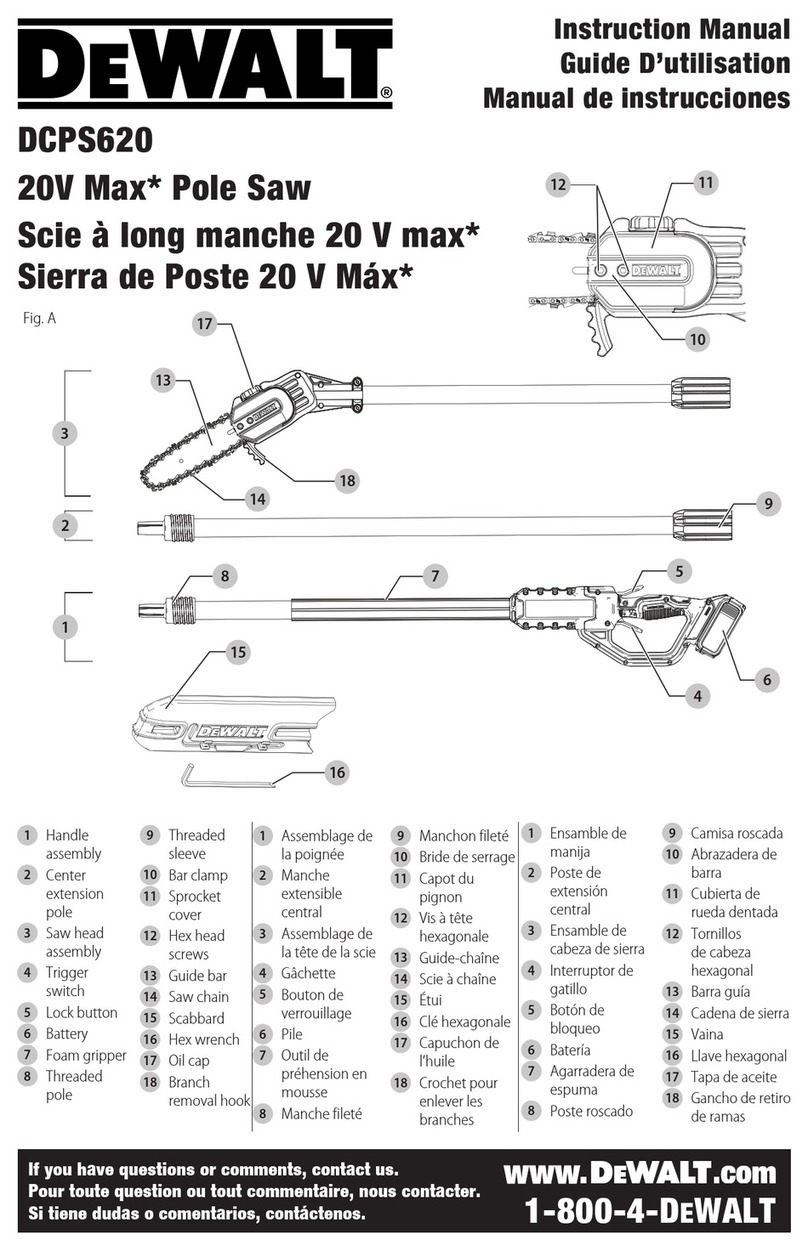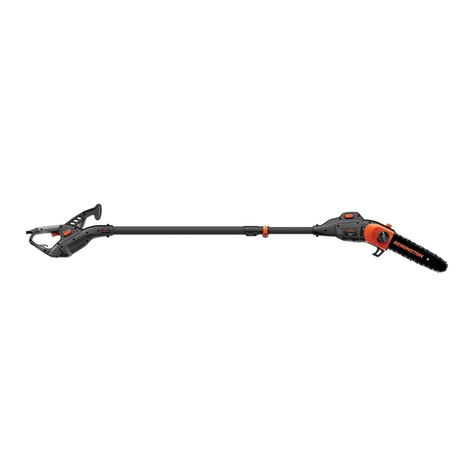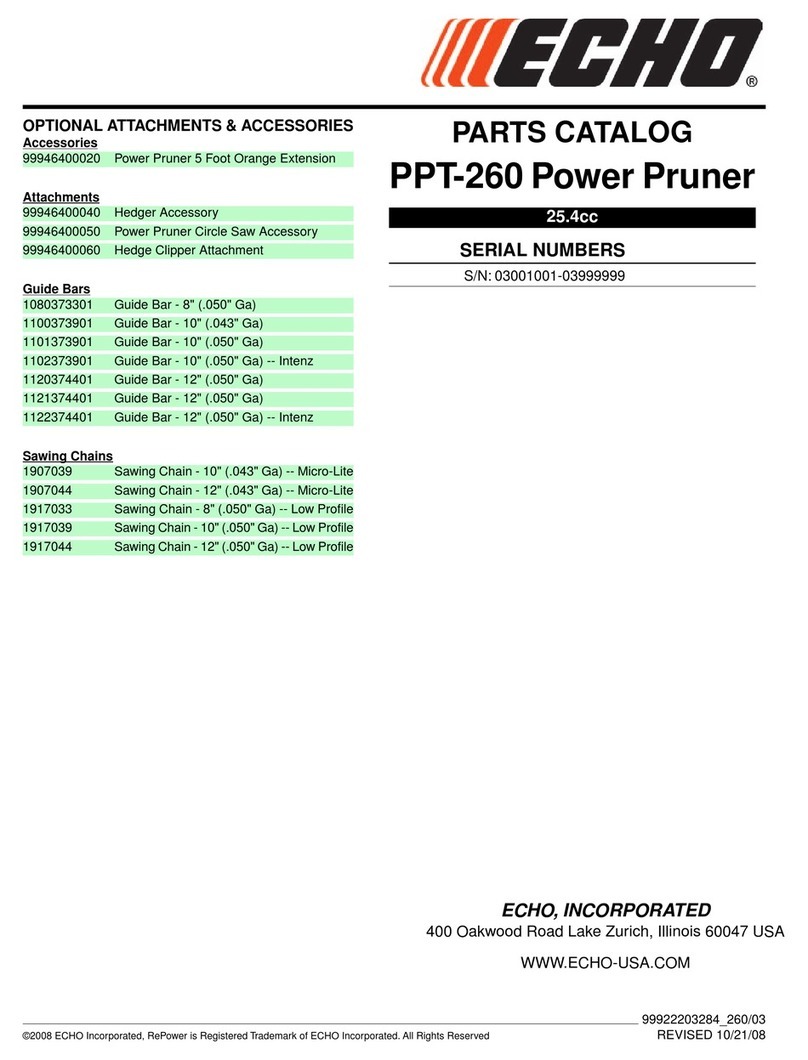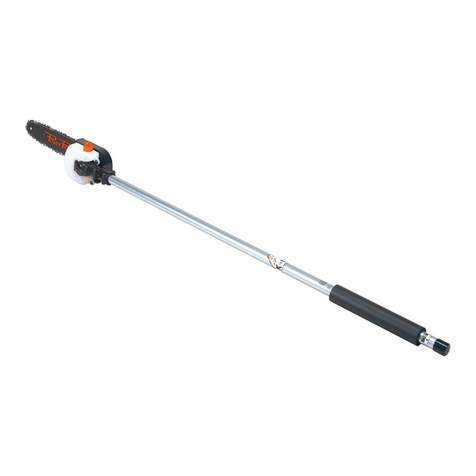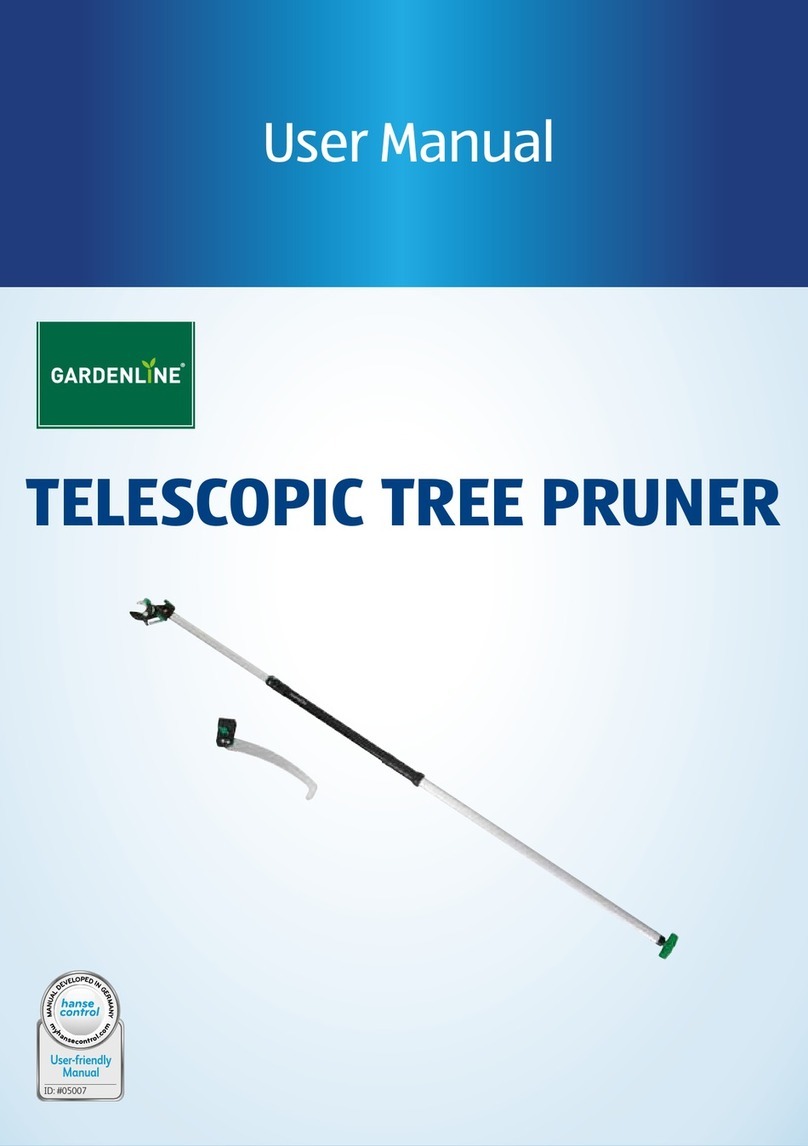3
IMPORTANT SAFETY INSTRUCTIONS
WARNING
Do not attempt to operate this tool until you have read all of the instructions, safety information, etc.
contained in this manual thoroughly and understand them completely. Failure to comply may result
in accidents involving re, electric shock, or serious personal injury.
BASIC SAFETY PRECAUTIONS
• Do not start cutting until you have a clear work area, secure footing, and a planned retreat path
from the falling tree. Cluttered areas invite accidents.
• Keep all children, bystanders, visitors, and animals out of the work area while starting or cutting
with the chainsaw.
• Do not operate chainsaw in an explosive atmosphere, such as in the presence of ammable
liquids, gases, or dust. Power tools create sparks which may ignite the dust or fumes.
WARNING
Use outdoor extension cords marked SW-A, SOW-A, STW-A, STOW-A, SJW-A, SJTW-A, or
SJTOW-A. These cords are rated for outdoor use, and reduce the risk of electric shock.
• Polarized Plugs. To reduce the risk of electric shock, this tool has a polarized plug (one blade
is wider than the other). This plug will only t into a polarized outlet one way. If the plug does
not t fully into the outlet, reverse the plug. If it still does not t, contact a qualied electrician to
install the proper outlet. Do not change the plug in any way.
• Make sure your extension cord is in good condition. When using an extension cord, be sure to
use one heavy enough to carry the current your product will draw. A wire gauge size (A.W.G.) of
at least 14 is recommended for an extension cord 100’ (30 m) or less in length. If in doubt, use
the next heavier gauge. The smaller the gauge number, the heavier the cord. An undersized
cord will cause a drop in line voltage, resulting in loss of power and overheating.
• Inspect extension cords periodically, and if damaged, have repaired by a licensed electrician.
Constantly stay aware of cord location. Following this rule will reduce the risk of electric shock
or re.
• Wear snug tting clothing. Always wear heavy, long pants, overalls, jeans or chaps made of
cut-resistant material or ones that contain cut-resistant inserts. Wear non-slip safety footwear.
Wear non-slip heavy duty gloves to improve your grip and to protect your hands. Do not wear
jewellery, short pants, sandals, or go barefoot. Do not wear loose-tting clothing that could be
drawn into the motor or catch the chain or underbrush. Secure hair so it is above shoulder level.
• Heavy protective clothing may increase operator fatigue, which could lead to heat stroke.
During weather that is hot and humid, heavy work should be scheduled for early morning or late
afternoon hours, when temperatures are cooler.
• Wear eye protection that is marked to comply withANSI Z87.1 as well as hearing and head
protection when operating this equipment. Hearing protection should be worn.
• Always be aware of what you are doing when using the chainsaw. Use common sense. Do
not operate the chainsaw when you are tired, ill, or under the inuence of alcohol, drugs, or
medication.


